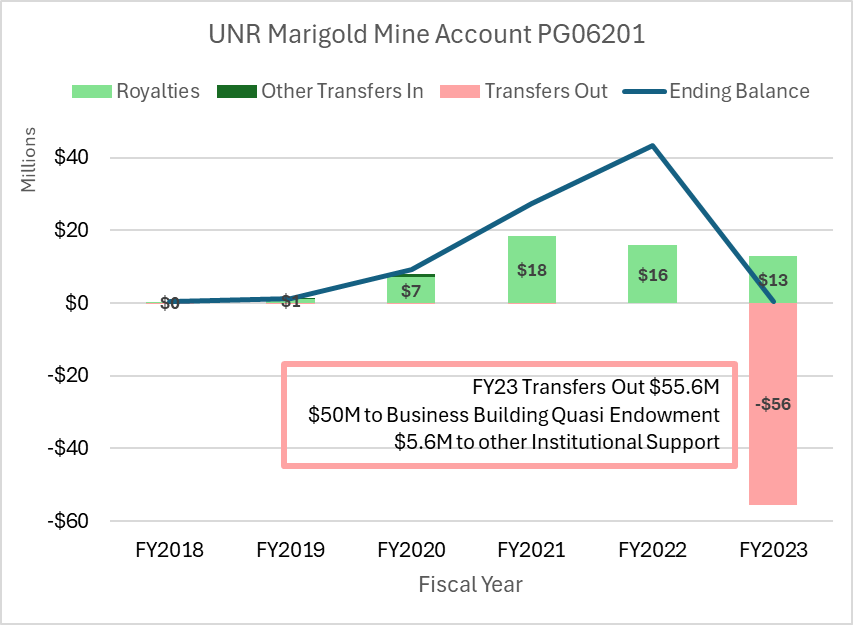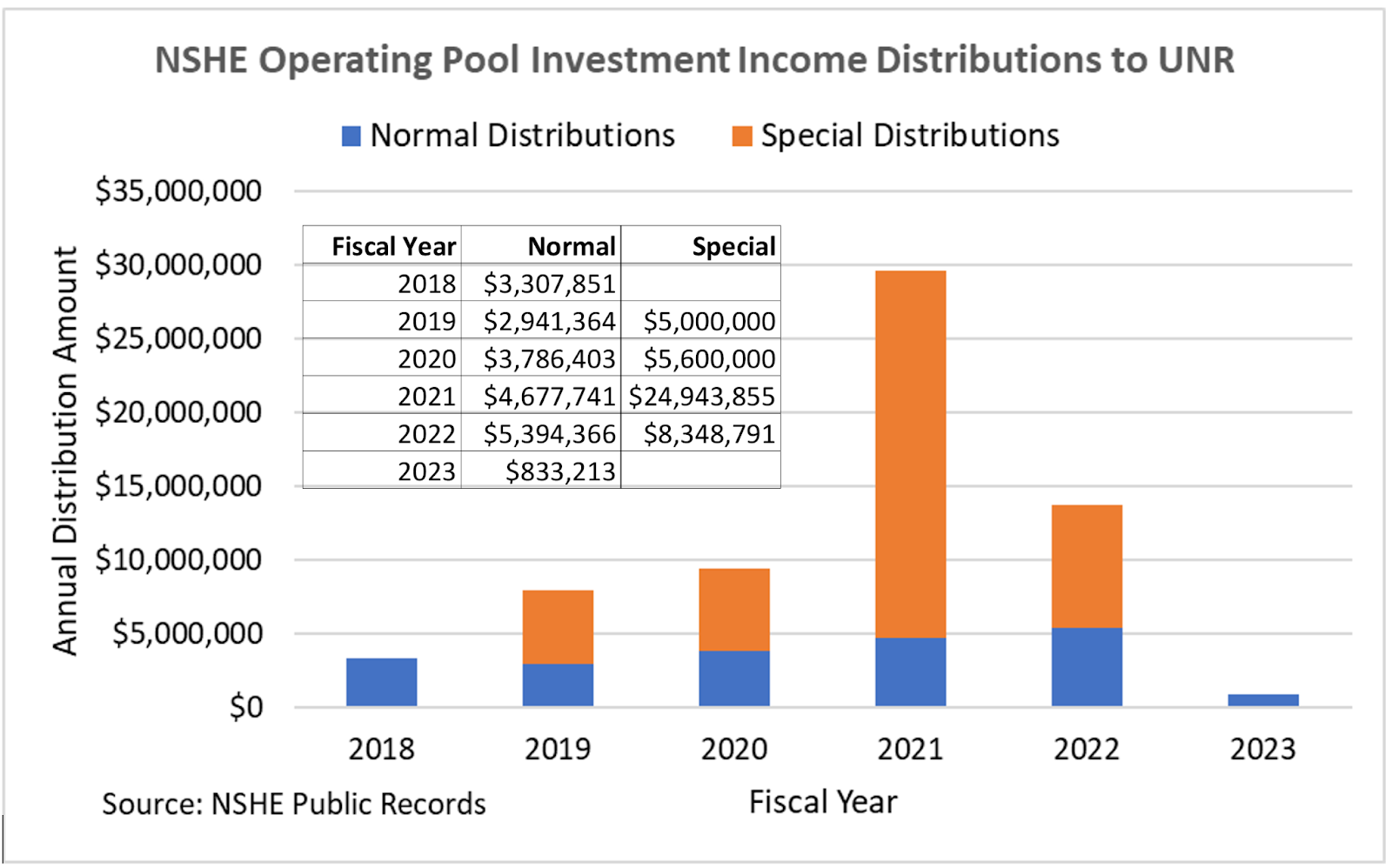UNR Budget: Misplaced Priorities and Diverted Resources
Summary and Solutions
Part 8 in NFA’s series on the University of Nevada, Reno budget crisis. This final installment summarizes our analyses of fiscal actions by the UNR administration and recommends solutions along with actions faculty members can take.
In this series of articles, we have attempted to shed light on the budget crisis at UNR. The administration has attributed the budget shortfalls to the underfunding of COLAs by the state, but the numbers indicate COLAs are not the primary factor. Long-overdue salary increases to restore faculty take-home pay (just back to 2019 levels after inflation) have been used by the UNR administration to justify austerity measures that threaten our core education and research missions.
In contrast, UNR executives–who also received their full COLAs–have not held themselves to those same austerity measures, by increasing executive salaries and the number of executives, committing to a thirty-year public-private partnership costing $10.25 million/year, and greatly increasing support for athletics. We are concerned that UNR is following the disastrous paths of West Virginia University and Auburn University, two publicized institutions with profligate spending on athletics, administration, and buildings. As a result, Auburn has become one of the most expensive public universities for students, and WVU eliminated entire academic programs when their promised enrollment increases never materialized.
Fortunately, some of these decisions are reversible. The key to putting UNR back on track as an excellent comprehensive university serving students and the citizens of the State of Nevada is to once again prioritize our core educational and research missions.
The fiscal consequences of decisions by the UNR administration are summarized in the following table.
| Administrative Actions since 2020 |
Fiscal Impact |
| Increased University Support for Intercollegiate Athletics (Part 2) |
An additional $10–13 million per year beginning in FY2021 |
| New executive positions and increased executive salaries (Part 3) |
$4.5 million per year over and above COLAs and average merit |
|
Student registration fees diverted from the State Operating Budget to Capital Improvement and General Improvement (Part 4)
|
$3.65 million per year diverted from the main instructional operating budget
|
|
Committed funds to the Business Building public–private partnership (Part 5)
|
$10.25 million/year for 30 years; unless additional private fundraising is successful, up to $7.8 million/year will be from student registration fees |
|
Inflated enrollment projections (Part 6)
|
Budget shortfalls of $8.5 million in FY2024 and $10 million in FY2025 |
|
Legislative underfunding of faculty and staff COLAs cited for 100 frozen positions and 5% budget cuts to departments (Part 7)
|
Net cost of the COLAs is $8.9 million in FY2024 and $8.2 million in FY2025, after mitigations approved by the Board of Regents in December. |
|
Digital Wolf Pack Initiative (iPads for new full-time students)
|
About $3.5 million per year |
Acquisition and operations of Lake Tahoe campus
|
Uncertain long-term impact
|
Budget Cuts
|
Fiscal Impact
|
| Freezing or eliminating 108 positions |
Savings of $11.3 million in FY2025 |
| 5% budget cuts for state-supported departments |
Savings of $11.1 million in FY2024 |
| 5% administrative overhead charge for self-supported programs |
$5 million cost to self-supported programs; income to UNR administration
|
- Estimated ongoing annual cost for athletics, executives, the business building, and iPads: up to $31 million per year.
- Each $1 million is equivalent to 10 new faculty positions [1].
Funding Sources
As documented in Part 4 and Part 5, student registration fees have been diverted from the core instructional budget to fund the business building while private fundraising goals have not yet been successful. We have so far been unable to determine funding sources for the rest of the listed new expenditures. The annual budget reports to the Board of Regents lack sufficient detail (video) to allow tracking of revenue flows. Public records requests submitted to UNR in December 2023 to discover the distributions of other student fees [2] and Marigold Mine royalties [3] have not been answered. Regardless of the sources [4,5], monies allowed for ongoing personnel or operational expenditures would have been available to UNR’s main instructional operations—that is, for the personnel and programs directly serving students.
Recommendations
The administration’s expensive initiatives can perhaps be justified on their merits when considered in isolation and if UNR had the funding to support them. In the absence of infinite resources, however, the question should always be whether the core missions of the University will be enhanced or harmed by a shift in budget. When athletics, buildings, and administrators are given higher priority than the instructional faculty and student support staff in a period of budget cuts, the judgment of the decision-makers must be questioned.
The following essential changes are needed:
- Every new cost initiative must be judged not only on its merits in isolation, but also whether it is the best use of funds to serve the university’s core educational mission.
- The administration must demonstrate a commitment to shared governance, in which faculty and students have a voice in decisions impacting them. Shared governance requires more than simply responding to Faculty Senate questions or listening to concerns at campus-wide meetings. Shared governance requires learning from comments made by those who know about these subjects and then meaningfully altering those plans to ensure the university can serve its core educational mission.
- Reduce institutional support for UNR Intercollegiate Athletics, which succeeded for decades without the higher new level of revenue, which comes from public or student money.
- The business building must raise its private philanthropy goal beyond the $50 million for the quasi-endowment of the Marigold Mine. Raising this goal–instead of expecting students to pay for it–would allow registration fees to be rededicated to the State Operating Budget.
- Eliminate the new executive positions established since 2020, and return tenured incumbents to the teaching faculty ranks so they can better serve students, who are currently struggling to find the courses they need to graduate.
- Cap future COLAs for highly compensated employees.
- Replace the universal iPad initiative with a more targeted and cost-effective approach.
- Develop a fiscally sound plan for the Lake Tahoe campus. A business plan to make the campus profitable—or less of a drain on UNR’s operating budget—has yet to be articulated.
- Grow on-campus student enrollment while maintaining a low student–teacher ratio of 18 or less. Full-time, in-person students are needed both for a thriving campus environment and to maintain tuition and fee revenue streams.
- Expand concurrent enrollment of high school students only if this program is demonstrated, with data, as having a net positive benefit.
- For full transparency, resume publication of detailed annual UNR budgets with actual revenues and expenditures by department and sources of funds, starting with FY2023.
In addition to advocating for these changes, the NFA will be engaging with the NSHE Ad Hoc Committee on Higher Education Funding to promote improvements to the legislative funding formula that are more responsive to student needs and NSHE’s educational mission.
Call to Action
The NFA does not believe it is too late to reverse the tide and that, even without a “formal” union, faculty can contribute to helping UNR return to its core instructional mission. We recommend faculty members take the following actions:
- Talk to your colleagues in other departments and colleges about their experiences. By being aware of the campus-wide issues, we can work together to solve them.
- Counter, whenever possible, the narrative that COLAs are to blame for austerity cuts.
- Ask your department chair or unit head to take your concerns to your Dean or Vice President.
- Contact your Faculty Senator(s) with questions you would like them to ask the administration. Include the impacts on your department and ability to teach.
- Ask the Faculty Senate Officers to demand full transparency from the administration on the sources and uses of funds and financial reserves.
- Contact your Regent and state legislators to tell them about your experience in trying to help students succeed and how budget cuts have impacted your department or college.
- Ask Regents to hold UNR and other institutions fully accountable for budget decisions.
- Encourage your colleagues to join the Nevada Faculty Alliance to support our continuing advocacy. With greater numbers, we can do more.
Articles in this series:
_________
[1] A UNR Assistant Professor hired at Q1 on the current salary schedule would earn $69,383. Adding the 33.8% fringe rate gives $92,834, or 10.8 positions per million dollars. By the Board of Regents action on December 1, 2023, the salary schedules will be augmented by 10% as of July 1, 2024, giving 9.8 positions per million dollars for future new hires.
[2] The categories of fees collected as part of student per-credit registration fees include State Operating Budget funding, Student Access for financial aid, Capital Improvement, General Improvement, and Activities & Programs. Only the State Operating Budget portion goes directly into the main state-supported UNR operating budget; the other categories distributed by direction of the UNR administration. The expenditures from those General Improvement and Activitieis & Programs fees have not been reported in the recent past, but in response to the 2022 legislative audit the Board of Regents is requiring annual reports in the future for those fees and other per-credit student fees..
[3] Marigold Mine royalty income is another unrestricted revenue source for UNR. As described in Part 5, $50 million in accumulated royalties were transferred to a quasi-endowment at the UNR Foundation to help fund the Business Building. [Update 2/2/2024: According to public records received, in addition to the $50 million transfer out to the UNR Foundation in FY2023 another $5.6 million was transferred out for "Institutional Support". The destination of those funds has not yet been determined. The following chart shows that the multimillion-dollar royalty income started in FY2020. The remaining balance in the royalty account as of 6/30/2023 was $491,542.]

[4] A source of unrestricted funds for UNR is distributions from NSHE Operating Pool Investment Income. The following chart shows the income distributed to UNR from FY2018 through FY2023, using data obtained from a public records request to NSHE. Normal monthly distributions occur when the reserve balance is between 3% and 8% of the operating pool fund. Special distributions occur when reserves exceed that range. An extraordinary distribution in FY2021 was from the special Market Fluctuation Reserve, essentially a rainy day fund, to cover pandemic-related budget cuts after the 2020 special session. If this unrestricted income is being used for ongoing expenses, the low distribution in FY2023 due to poor market performance that year may have contributed to the current budget crisis at UNR.

[5] In FY2023 the UNR Foundation distributed nearly $19 million to UNR in program gifts as well as $7.2 million in scholarships. Most of the program gift distributions are for donor-designated programs. However, undetermined amounts may be unrestricted funds; for example, program gifts labeled as program or college “excellence”.
###
The information in this series of analyses of the UNR budget is based on public reports and records, interpreted as accurately as possible given uncertainties in the assumptions used for various reports. Corrections from authoritative sources are welcome. Contact: kent.ervin@nevadafacultyalliance.org.
Updated 2/2/2024 to include additional information about the Marigold Mines Royalties account.